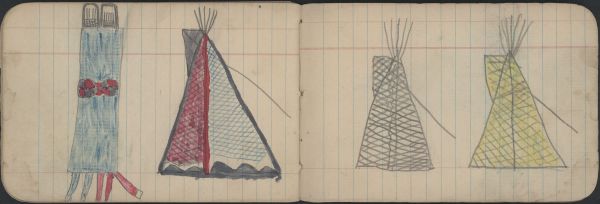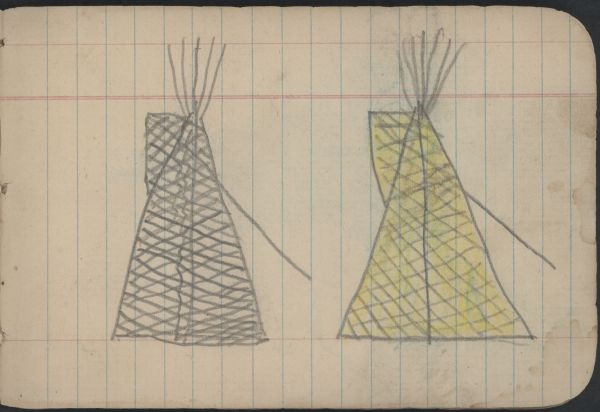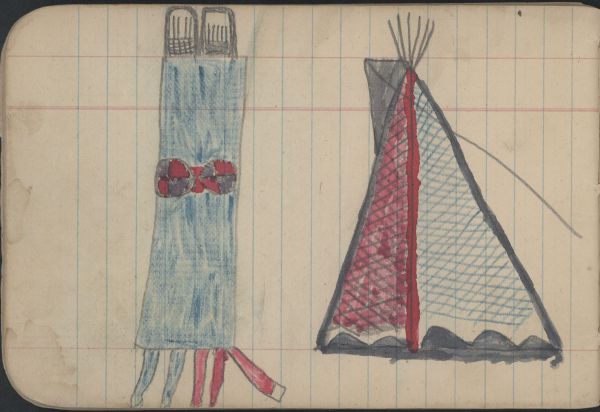COURTING SCENE: Couple in Courting Blanket before Tipi; CAMP SCENE: Two Tipis
Ethnographic Notes
A courting scene diptych. Two tipis with cross-hatch design fill the right-hand page of the diptych; the left-hand side of the scene is another cross-hatch design tipi and a courting couple wrapped in a blue blanket. Right (page 4): Two tipis with no human or animal figures. Both have open smoke-hole flaps. Both tipis are bisected by one vertical line. The tipi on the right is made of cross-hatch lines with yellow fill. In the left-hand tipi, is drawn in lead pencil only. Two jagged lines like lightning are drawn parallel to the center axis. Left: (page 5 (KHS 6). On left-hand page of the diptych, the red-and-blue tipi fills half the page, continuing the line of three tipis. To the left is the courting couple. The tipi is outlined in black water color. It has penciled cross-hatching, but half the lodge is red (viewer�s left) and half is blue. The bottom edge is a border of arcs or semicircles. The couple is wrapped within a single blue courting blanket with two medicine wheel designs drawn midway. The blue blanket with a beaded strip with the hour glass or medicine wheel figure is a courting blanket adopted from the Lakota. See William K. Powers, �The Art of Courtship among the Oglala,� American Indian Art (Spring 1980): 40-47. Porcupine, who was one of the documented prisoners at Dodge City, had a Lakota mother (Powell, 1981: 489). The man�s red-colored breech clout shows under the blanket, as well as his red leggings. The woman�s leggings, to the viewer�s far left, are blue. Faces are blank, but both have face painting: the lower half of the jaw is covered in cross-hatch designs, like the tipis, with four lines extending vertically halfway up the face (see plate 8 for discussion of four-line design pattern). Media: Lead pencil outlines filled with red watercolor, yellow, and blue pencil.


